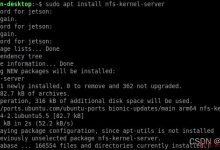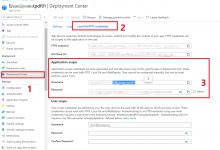一:系统安装过程
1.1运维自动化发展历程及技术应用

PXE介绍
1)Preboot Excution Environment 预启动执行环境
2)Intel公司研发
3)基于Client/Server的网络模式,支持远程主机通过网络从远端服务器下载映像,并由此支持通过网络启动操作系统
4)PXE可以引导和安装Windows,linux等多种操作系统
PXE工作原理
-
Client向PXE Server上的DHCP发送IP地址请求消息,DHCP检测Client是否合法(主要是检测Client的网卡MAC地址),如果合法则返回Client的IP地址,同时将启动文件pxelinux.0的位置信息一并传送给Client
-
Client向PXE Server上的TFTP发送获取pxelinux.0请求消息,TFTP接收到消息之后再向Client发送pxelinux.0大小信息,试探Client是否满意,当TFTP收到Client发回的同意大小信息之后,正式向Client发送pxelinux.0 Client执行接收到的pxelinux.0文件
-
Client向TFTP Server发送针对本机的配置信息文件(在TFTP 服务的pxelinux.cfg目录下),TFTP将配置文件发回Client,继而Client根据配置文件执行后续操作。
-
Client向TFTP发送Linux内核请求信息,TFTP接收到消息之后将内核文件发送给Client
-
Client向TFTP发送根文件请求信息,TFTP接收到消息之后返回Linux根文件系统
-
Client启动Linux内核
-
Client下载安装源文件,读取自动化安装脚本

操作系统安装的流程
1)通用流程:首先,bios启动,选择操作系统的启动(安装)模式(此时,内存是空白的),然后根据相关的安装模式,寻找操作系统的引导程序(不同的模式,对应不同的引导程序当然也对应着不同的引导程序存在的位置),引导程序加载文件系统初始化(initrd)程序和内核初始镜像(vmlinuz),完成操作系统安装前的初始化;接着,操作系统开始安装相关的系统和应用程序。
2)硬盘安装的流程:bios启动——MBR寻找grub——grub程序读取menu.list等配置文件,找到内核启动镜像和相关初始化程序,安装(或者启动)。
3)PXE(Pre-boot Execution Environment)是由Intel设计,可以使计算机通过网络启动的协议。协议分为client和server两端,PXE client在网卡的ROM中,当计算机启动时,BIOS把PXE client调入内存执行,并显示出命令菜单,经用户选择后,PXE client将放置在远端的操作系统通过网络下载到本地运行。
4)pxe网络安装的流程:bios启动——pxe client中的程序进入内存,显示命令菜单——此程序开始寻找网络引导程序(bootstrap文件,这个文件的名字随着发行版的不同而不同,在centos中,它是pxelinux.0)——引导程序读取配置文件pxelinux.cfg,
获得系统初始化的相关文件信息——系统启动,开始进行安装。PXE自动化安装CentOS 7
实验:基于centos7的PXE自动化安装centos7,6
环境:
两台主机
一台PXE,DHCP,HTTPD,TFTP服务器(一个网卡,一个主机),一台测试机(一个网卡,仅主机)
1.yum install httpd tftp-server dhcp syslinux
systemctl start httpd tftp
2.准备yum源
mkdir /var/www/html/centos{6,7}/os/x86_64 -pvmount /dev/sr0 /var/www/html/centos/7/os/x86_64/mount /dev/sr1 /var/www/html/centos/6/os/x86_64/mkdir /var/www/html/ksdir安装前准备:关闭防火墙和SELINUX,DHCP服务器静态IP
安装软件包
yum install tftp-server -y# 安装服务端TFTP包yum install dhcp -y # 安装dhcpyum install http -y # 安装http
centos7启动tftp服务:
[root@centos7~]#systemctl start tftp # 启动tftp[root@centos7~]#systemctl enable tftp[root@centos7~]#ss -nultp|grep 69users:((\"rpc.statd\",pid=6655,fd=10))udp UNCONN 0 0 :::69 # tftp默认端口是69
centos6启动tftp服务:
[root@centos6~]#chkconfig tftp on # 启动tftp,下次默认开机启动[root@centos6~]#service xinetd startStarting xinetd:
TFTP从服务器上上传下载文件功能,下载时需要知道对方的文件名,下载下来的文件会在/var/lib/tftpboot目录里(tftp获取文件部分):
[root@centos6data]#cp /etc/fstab /var/lib/tftpboot/f1 # 将服务器的文件放在/var/lib/tfpboot/目录下,起名叫f1[root@centos6~]#tftp 10.0.0.200 # 通过连接tftp服务在/var/lib/tftpboot/目录下下载必要的文件tftp> statustftp> get f1 # 在tftp服务上下载文件tftp> q # 按q可以退出
安装http服务:
[root@centos7~]# yum install httpd -y 安装完http服务后[root@centos7~]# systemctl start httpd 启动http服务[root@centos7~]# systemctl enable httpd 启动http服务,默认下次开启启动
创建网页版yum源 :
基于httpd服务的yum源仓库
[root@centos7-2 ~]# yum install autofs -y # 安装autofs[root@centos7-2 ~]# systemctl start autofs # 启动autofs[root@centos7-2 ~]# systemctl enable autofs # 下次开机启动autofs[root@centos7-2 yum.repos.d]#mkdir -p /etc/yum.repos.d/bak/[root@centos7-2 yum.repos.d]#mv /etc/yum.repos.d/ /etc/yum.repos.d/bak/yum repolistls /var/cache/yum/x86_64/7/yum clean allyum repolistls /var/cache/yum/x86_64/7/rm -rf /var/cache/yum/*[root@centos7-2 yum.repos.d]#vim base.repo 开始创建yum仓库[base]baseurl=http://10.0.0.200/CentOS/$releasever/os/$basearchgpgcheck= 0enable=1[root@centos7-2 yum.repos.d]#yum install httpd -y 安装httpd服务[root@centos7-2 yum.repos.d]#systemctl start httpd 启动httpd服务[root@centos7-2 yum.repos.d]#mkdir -pv /var/www/html/centos/{6,7}/os/x86_64/ 新建一个类似光盘的路径目录###访问10.0.0.200/centos[root@centos7 html]# mount /dev/sr0 /var/www/html/centos/7/os/x86_64/mount: /dev/sr0 is write-protected, mounting read-only[root@centos7 7]#cd /var/www/html/centos/7[root@centos7 7]#rz###访问10.0.0.200/centos/7 刷新页面[root@centos7~]#mkdir -pv /var/www/html/centos/{6,7}/os/x86_64/ 创建一个centos6/7的文件[root@centos7html]#mount /dev/sr0 /var/www/html/centos/7/os/x86_64/ 将光盘挂载到cnetos7文件夹下mount: /dev/sr0 is write-protected, mounting read-only将应答文件放到http服务上:yum install system-config-kickstart -y#默认的配置文件cat anaconda-ks.cfg#version=DEVEL# System authorization informationauth --enableshadow --passalgo=sha512# Use CDROM installation mediacdrom# Use graphical installgraphical# Run the Setup Agent on first bootfirstboot --enableignoredisk --only-use=sda# Keyboard layoutskeyboard --vckeymap=us --xlayouts=\'us\'# System languagelang en_US.UTF-8 --addsupport=zh_CN.UTF-8# Network informationnetwork --bootproto=static --device=ens33 --gateway=10.0.0.2 --ip=10.0.0.200 --nameserver=223.5.5.5 --netmask=255.255.255.0 --ipv6=auto --activatenetwork --hostname=centos7# Root passwordrootpw --iscrypted $6$7RQzNtx4jTL6TtKf$PzkdcXkthlpw0vOcJsyrPqCilwHlJdPlREVRT3RoR0SWD/.ut7vIZ3nljWmjYxPttD8ikJlltH5PpqvFt2llI0# System servicesservices --disabled=\"chronyd\"# System timezonetimezone Asia/Shanghai --isUtc --nontp# System bootloader configurationbootloader --location=mbr --boot-drive=sda# Partition clearing informationclearpart --none --initlabel# Disk partitioning informationpart swap --fstype=\"swap\" --ondisk=sda --size=1024part /boot --fstype=\"xfs\" --ondisk=sda --size=200part / --fstype=\"xfs\" --ondisk=sda --size=80695%packages@compat-libraries@core@debugging@development@system-admin-tools%end%addon com_redhat_kdump --disable --reserve-mb=\'auto\'%end%anacondapwpolicy root --minlen=6 --minquality=1 --notstrict --nochanges --notemptypwpolicy user --minlen=6 --minquality=1 --notstrict --nochanges --emptyokpwpolicy luks --minlen=6 --minquality=1 --notstrict --nochanges --notempty%end[root@centos7~]#mkdir /var/www/html/ksdir 新建了一个应答文件夹[root@centos7~]#cp anaconda-ks.cfg /var/www/html/ksdir/ks7_mini.cfg 将现有的家目录文件anaconda-ks.cfg文件复制到ksdir文件夹下面,起名叫ks7_mini.cfg[root@centos7ksdir]#vim ks7_mini.cfg 修改里边的应答文件信息#version=DEVEL# Use CDROM installation mediaurl --url=http://10.0.0.200/centos/7/os/x86_64/ #将网页挂载的光盘路径写上# Use graphical installtext #文本格式安装# Run the Setup Agent on first bootfirstboot --enableignoredisk --only-use=sda# Keyboard layoutskeyboard --vckeymap=us --xlayouts=\'us\'# System languagelang en_US.UTF-8# Network informationnetwork --bootproto=dhcp --device=ens33 --ipv6=auto --activatenetwork --hostname=centos7# Root passwordrootpw --iscrypted $6$zQd4v6GjKalpnj.h$uutceFNO9vO0H2mJoBQYgpW5iNUrmKNHWulIKrSFfPJtpu4f.llg6rm9veeswxYrFXOpXV5M9MPqMBv/DGjdj.# System servicesfirewall --disabled #防火墙关掉selinux --disabled #selinux关掉# System timezonetimezone Asia/Shanghai --isUtc --nontpuser --name=liu --password=$6$LlHE.xyYU4ZoUsbV$nBtUpJjkXmMa1lQFNoNhOs0AuVaOecBttShTt3wNrUncYh.JLfnBIIfMJtOu0Cnkemt1Wr76sHCEiHrD.yKxE1 --iscrypted --gecos=\"liu\"# X Window System configuration information# System bootloader configurationbootloader --location=mbr --boot-drive=sda# Partition clearing informationclearpart --all --initlabel #磁盘全部格式化zerombr #mbr磁盘清空reboot #安装完重启# Disk partitioning informationpart /boot --fstype=\"xfs\" --ondisk=sda --size=1024part / --fstype=\"xfs\" --ondisk=sda --size=102400part swap --fstype=\"swap\" --ondisk=sda --size=3072part /data --fstype=\"xfs\" --ondisk=sda --size=51200%packages@^minimalautofs%end[root@centos7ksdir]#lltotal 4-rw------- 1 root root 1906 Oct 30 20:19 ks7_mini.cfg #由于应答文件在root模式下有读权限,需要全部加读权限[root@centos7ksdir]#chmod +r ks7_mini.cfg #将应答文件加读权限[root@centos7~]#mkdir /var/www/html/ksdir[root@centos7~]#cp anaconda-ks.cfg /var/www/html/ksdir/ks7_mini.cfg[root@centos7ksdir]#vim ks7_mini.cfg#version=DEVEL# Use CDROM installation mediaurl --url=http://10.0.0.200/centos/7/os/x86_64/# Use graphical installtext# Run the Setup Agent on first bootfirstboot --enableignoredisk --only-use=sda# Keyboard layoutskeyboard --vckeymap=us --xlayouts=\'us\'# System languagelang en_US.UTF-8# Network informationnetwork --bootproto=dhcp --device=eth0 --ipv6=auto --activatenetwork --hostname=centos7# Root passwordrootpw --iscrypted$6$7RQzNtx4jTL6TtKf$PzkdcXkthlpw0vOcJsyrPqCilwHlJdPlREVRT3RoR0SWD/.ut7vIZ3nljWmjYxPttD8ikJlltH5PpqvFt2llI0# System servicesfirewall --disabledselinux --disabled# System timezonetimezone Asia/Shanghai --isUtc --nontp#ssh-keygen#ssh-copy-id 127.0.0.1#cat /root/.ssh/authorized_keys#ssh-rsa AAAAB3NzaC1yc2EAAAADAQABAAABAQC03UIO8ux8f0h4u1RXwKbUHq+rnhgJqSa/Bid9M9vv/EYzbxwHdDYdF+nqkt1cfxLzZ37HYpi80DREcBcaIWtfS/ZDyrlRQzSqUpBT70VMNvCTxFVWv2dWl8cBENAGyuVtMI8r0m56+ktFoILk/4uMiakAOw9ba8mGzQBhpTx0AnviKplGuaO6de7fmgzaA0awSYCH1Z0Tc7WJwyo7IoBSnENllr1dAGzPTUOrniEMPklEKcAIi4ZLYaDFVl9ErolVGT+eaYtcVqLriv7RcuWB7bo0Vf1zwGoH7gJFHif0LslTOzts4EtxdnK6j1QjSZXBYEroUs7pJYNFbhs/clFz root@centos7 配置图形界面#user --name=liu --password=$6$LlHE.xyYU4ZoUsbV$nBtUpJjkXmMa1lQFNoNhOs0AuVaOecBttShTt3wNrUncYh.JLfnBIIfMJtOu0Cnkemt1Wr76sHCEiHrD.yKxE1 --iscrypted --gecos=\"liu\"# X Window System configuration information# System bootloader configurationbootloader --location=mbr --boot-drive=sda# Partition clearing informationclearpart --all --initlabelzerombrreboot# Disk partitioning informationpart /boot --fstype=\"xfs\" --ondisk=sda --size=1024part / --fstype=\"xfs\" --ondisk=sda --size=102400part swap --fstype=\"swap\" --ondisk=sda --size=3072part /data --fstype=\"xfs\" --ondisk=sda --size=51200%packages@^minimalautofs%end[root@centos7ksdir]#lltotal 4-rw------- 1 root root 1906 Oct 30 20:19 ks7_mini.cfg[root@centos7ksdir]#chmod +r ks7_mini.cfg安装和配置DHCP服务
[root@centos7~]#yum install dhcp -y 安装dhcp服务<br>[root@centos7~]#vim /etc/dhcp/dhcpd.conf 配置dhcp服务# dhcpd.conf## Sample configuration file for ISC dhcpd## option definitions common to all supported networks...option domain-name \"example.org\";option domain-name-servers ns1.example.org, ns2.example.org;default-lease-time 86400;max-lease-time 864000;# Use this to enble / disable dynamic dns updates globally.#ddns-update-style none;# If this DHCP server is the official DHCP server for the local# network, the authoritative directive should be uncommented.#authoritative;# Use this to send dhcp log messages to a different log file (you also# have to hack syslog.conf to complete the redirection).log-facility local7;# No service will be given on this subnet, but declaring it helps the# DHCP server to understand the network topology.subnet 10.0.0.0 netmask 255.255.255.0 { 声明当前的IP地址段和子网掩码range 10.0.0.10 10.0.0.200; 设置地址池:192.168.34.10-200option routers 10.0.0.1; 设置当前的网关地址option domain-name-servers 8.8.8.8; 设置DNSnext-server 10.0.0.200; 指明引导所在的服务主机的IP地址filename \"pxelinux.0\"; 指明引导文件名称 }# This is a very basic subnet declaration.[root@centos7~]#systemctl enable dhcpd 配置好dhcp服务后,启动dhcp服务,默认下次开机启动[root@centos7~]#yum install dhcp -y 安装dhcp服务<br>[root@centos7~]#vim /etc/dhcp/dhcpd.conf 配置dhcp服务# dhcpd.conf## Sample configuration file for ISC dhcpd## option definitions common to all supported networks...option domain-name \"example.org\";option domain-name-servers ns1.example.org, ns2.example.org;default-lease-time 86400;max-lease-time 864000;# Use this to enble / disable dynamic dns updates globally.#ddns-update-style none;# If this DHCP server is the official DHCP server for the local# network, the authoritative directive should be uncommented.#authoritative;# Use this to send dhcp log messages to a different log file (you also# have to hack syslog.conf to complete the redirection).log-facility local7;# No service will be given on this subnet, but declaring it helps the# DHCP server to understand the network topology.subnet 10.0.0.0 netmask 255.255.255.0 {range 10.0.0.10 10.0.0.200;option routers 10.0.0.1;option domain-name-servers 114.114.114.114,180.76.76.76;next-server 10.0.0.200;filename \"pxelinux.0\"; }# This is a very basic subnet declaration.[root@centos7~]#systemctl enable dhcpd 配置好dhcp服务后,启动dhcp服务,默认下次开机启动安装syslinux 里边有pxelinux.0包文件**
[root@centos7~]#yum install syslinux -y 安装syslinux包
syslinux配置文件相关的安装包:
[root@centos7~]#rpm -ql syslinux/usr/share/syslinux/menu.c32 开机启动的蓝色背景/usr/share/syslinux/pxelinux.0 pxelinux.0包位置[root@centos7~]#mkdir /var/lib/tftpboot/pxelinux.cfg 创建一个pxelinux.cfg相关文件夹[root@centos7~]#cp /usr/share/syslinux/{menu.c32,pxelinux.0} /var/lib/tftpboot 将syslinux下的两个配置文件放到tftpboot目录下,其中menu.c32 开机时作为蓝色背景。[root@centos7~]#cp /misc/cd/isolinux/{vmlinuz,initrd.img} /var/lib/tftpboot 将光盘下的内核启动文件vmlinuz和initrd.img文件放到tftpboot目录下[root@centos7~]#cd /var/lib/tftpboot[root@centos7tftpboot]#cp /misc/cd/isolinux/isolinux.cfg /var/lib/tftpboot/pxelinux.cfg/default
将isolinux.cfg文件复制到pxelinux.cfg文件夹下,起名叫default,作为启动菜单。[root@centos7tftpboot]#tree 查看已经创建的文件信息,一个文件都不能少.├── initrd.img├── menu.c32├── pxelinux.0├── pxelinux.cfg│ └── default└── vmlinuz修改pxelinux.cfg下的default配置文件的信息:
[root@centos7tftpboot]#vim /var/lib/tftpboot/pxelinux.cfg/default 修改配置文件信息default menu.c32 开机蓝色背景timeout 10 超时时长改为10秒menu title PXE CentOS 开机显示的抬头信息label mini #最小化安装名称menu label ^Auto Install mini CentOS 7 #自动化安装名称kernel vmlinuzappend initrd=initrd.img ks=http://192.168.34.101/ksdir/ks7_mini.cfg #写入引导文件路径label desktop #备用的桌面安装menu label ^Auto Install desktop CentOS 7 #书写相关备用桌面格式kernel vmlinuzappend initrd=initrd.img ks=http://192.168.34.105/ksdir/ks7_mini.cfglabel localmenu default #默认的本地安装menu label Boot from ^local drivelocalboot 0xffff
在新开一台机器开始安装系统,将网卡模式设置为仅主机模式,将VMnet1对勾去掉,保证与服务端的网卡在一个网卡上:

开机通过ARP广播开始寻找同一网卡的配置文件信息,进而找到以上写入的相关配置文件,实现自动化安装:
注意:centos7系统的内存尽量设置1.2G以上,否则会提示内存空间不足,导致无法安装。

centos6系统安装过程:
准备工作:
[root@centos6~]#chkconfig tftp on 启动tftp服务[root@centos6~]#service xinetd startStarting xinetd:[root@centos6~]#service httpd start 启动http服务Starting httpd:
将光盘挂载到网页上:
[root@centos6html]#mkdir -pv centos/6/os/x86_64 新建文件夹mkdir: created directory `centos\'mkdir: created directory `centos/6\'mkdir: created directory `centos/6/os\'mkdir: created directory `centos/6/os/x86_64\'[root@centos6html]#mount /dev/sr0 /var/www/html/centos/6/os/x86_64 将新建的文件挂载到网页上mount: block device /dev/sr0 is write-protected, mounting read-only
制作应答文件:
[root@centos6tftpboot]#cp /root/anaconda-ks.cfg ks6_mini.cfg 将系统中自带的文件复制一份到/var/lib/tftpboot目录下[root@centos6tftpboot]#vim ks6_mini.cfg 修改当前的应答文件信息url --url=http://192.168.34.105/centos/6/os/x86_64 指定挂载光盘路径lang en_US.UTF-8keyboard ustext #以文本形式安装reboot #安装完重启network --onboot yes --device eth0 --bootproto dhcp --noipv6rootpw --iscrypted $6$6pdd/ulLIO5IoQ2u$EKDznPOR19rWTeBjVVTYGay3PbNd3t0v9.Ae.jOsxP9i3T8khOMhDxDwTzfa9E3gqirD7qD3Pw6qK1QKf2pDE0firewall --disabled #关闭防火墙authconfig --enableshadow --passalgo=sha512selinux --disabled 关闭selinuxtimezone Asia/Shanghaibootloader --location=mbr --driveorder=sda --append=\"crashkernel=auto rhgb quiet\"# The following is the partition information you requested# Note that any partitions you deleted are not expressed# here so unless you clear all partitions first, this is# not guaranteed to workclearpart --all #格式化磁盘zerombr #情况mbr分区part /boot --fstype=ext4 --size=1024 #boot分区part / --fstype=ext4 --size=100000 #根分区part /data --fstype=ext4 --size=50000 #data分区part swap --size=2048 #swap 分区%packages@core #只安装核包%end[root@centos7tftpboot]#ksvalidator /var/www/html/ksdir/ks7_desktop.cfg #检测[root@centos7tftpboot]#chmod +r ks6_mini.cfg #因为应答文件只有root有读权限,将全部属组都加有读权限
安装dhcp服务,并修改相关配置信息:
[root@centos6~]#yum install dhcp 安装dhcp服务<br>[root@centos6html]#vim /etc/dhcp/dhcpd.conf 修改dhcp配置信息default-lease-time 84600; 申请默认租期max-lease-time 86400; 最大申请租期# Use this to enble / disable dynamic dns updates globally.#ddns-update-style none;# If this DHCP server is the official DHCP server for the local# network, the authoritative directive should be uncommented.#authoritative;# Use this to send dhcp log messages to a different log file (you also# have to hack syslog.conf to complete the redirection).log-facility local7;# No service will be given on this subnet, but declaring it helps the# DHCP server to understand the network topology.subnet 192.168.34.0 netmask 255.255.255.0 { 声明地址段和子网掩码range 192.168.34.10 192.168.34.200; 设置地址池:192.168.34.10-200option domain-name-servers 8.8.8.8; 设置NDSnext-server 192.168.34.105; 指明引导服务主机所在的IP地址filename \"pxelinux.0\"; 指明引导的文件名称}<br><br>[root@centos6html]#service dhcpd start 重新启动dhcp服务将相关的配置文件放在/var/lib/tftpboot目录下:
[root@centos6html]#cd /var/lib/tftpboot[root@centos6tftpboot]#mkdir pxelinux.cfg[root@centos6tftpboot]#yum install syslinux-nonlinux[root@centos6tftpboot]#cp /misc/cd/isolinux/{initrd.img,boot.msg,vmlinuz,splash.jpg,vesamenu.c32} .[root@centos6tftpboot]#cp /misc/cd/isolinux//isolinux.cfg pxelinux.cfg/default修改当前pxelinux.cfg下面的default配置文件信息:
[root@centos6tftpboot]#vim pxelinux.cfg/defaultdefault vesamenu.c32#prompt 1timeout 100 超时时长修改至10slabel linuxmenu label ^Auto Install Mini centos 6 system 修改为自动安装menu defaultkernel vmlinuzappend initrd=initrd.img ks=http://192.168.34.105/ksdir/ks6_mini.cfg 指定当前的应答文件路径label localmenu default 设置一个默认安装menu label Boot from ^local drivelocalboot 0xffff
至此,相关的配置文件设置完成,打开一个新的虚拟机进行安装系统,将网卡默认设置成仅主机模式,将vmnet1的DHCP功能关掉,开机后按esc,选择网卡启动安装,开始安装系统,结束。
-

选择网卡启动,然后按F10保存,就会自动重启,新装的主机就会通过广播获取DHCP相关的安装配置信息,就会启动进行安装,至此,cnetos6安装结束。
在centos7基于PXE安装centos6/7系统实验:(此安装适用于BIOS模式安装)
在centos7上新加一块ISO镜像:
-

准备工作:
启动三个服务:
[root@centos7tftpboot]#systemctl start dhcpd[root@centos7tftpboot]#systemctl start tftp[root@centos7tftpboot]#systemctl start httpd
挂载光盘:
[root@centos7~]#mkdir /var/www/html/centos/{6,7}/os/x86_64[root@centos7~]#mount /dev/sr0 /var/www/html/centos/7/os/x86_64/[root@centos7~]#mount /dev/sr1 /var/www/html/centos/6/os/x86_64/复制centos7之前制作的应答文件或者(也可以复制家目录的anaconda-ks.cfg里的相关应答文件)和内核启动文件
[root@centos7ksdir]#cp /root/anaconda-ks.cfg ks7_mini.cfg[root@centos7ksdir]#scp /root/anaconda-sks.cfg /var/www/html/ksdir/ks6_mini.cfg将centos6的默认应答文件复制到centos7目录里,命令为ks6_mini.cfg,然后对其稍加修改即可。[root@centos7ksdir]#lltotal 8-rw-r--r-- 1 root root 1400 Oct 31 09:21 ks6_mini.cfg-rw-r--r-- 1 root root 1400 Oct 30 20:29 ks7_mini.cfg[root@centos7tftpboot]#mkdir linux{6,7}[root@centos7tftpboot]#mv vmlinuz initrd.img linux7/将本地的内核启动文件复制在新建的linux7下[root@centos7tftpboot]#cp /var/www/html/centos/6/os/x86_64/isolinux/{vmlinuz,initrd.img} linux6/ 将挂载的iso光盘的启动文件复制到新建的linux6下[root@centos7tftpboot]#cp /usr/share/syslinux/{menu.c32,pxelinux.0}[root@centos7tftpboot]#cp /misc/cd/isolinux/isolinux.cfg /var/lib/tftpboot/pxelinux.cfg 将启动菜单复制到pxelinu.cfg目录下[root@centos7tftpboot]#tree.├── linux6│ ├── initrd.img│ └── vmlinuz├── linux7│ ├── initrd.img│ └── vmlinuz├── menu.c32├── pxelinux.0└── pxelinux.cfg└── default 修改此配置文件信息修改引导文件信息:
vim pxelinux.cfg/defaultdefault menu.c32timeout 100menu title PXE Insall CentOSlabel mini7menu label ^Auto Install mini7 CentOS 7 修改启动显示的信息kernel linux7/vmlinuz 由于新建了linux7,启动文件路径在此目录下,需要指定启动文件在linux7下面append initrd=linux7/initrd.img ks=http://192.168.34.101/ksdir/ks7_mini.cfg 指定应答文件路径label mini6menu label ^Auto Install mini6 CentOS 6 修改显示的信息kernel linux6/vmlinuz 由于新建了一个linux6,启动文件路径在此目录下,因此需要添加linux6路径指定应答文件append initrd=linux6/initrd.img ks=http://192.168.34.101/ksdir/ks6_mini.cfg 指定应答文件路径label localmenu defaultmenu label Boot from ^local drivelocalboot 0xffff
修改centos6的应答文件内容:
[root@centos7tftpboot]#vim /var/www/html/ksdir/ks6_mini.cfgurl --url=http://192.168.34.101/centos/6/os/x86_64 指定centos6光盘挂载路径text 以文本方式安装# System servicesfirewall --disabled 防火墙关掉selinux --disabled selinux关掉# System timezonetimezone Asia/Shanghai --isUtc --nontpuser --name=liu --password=$6$LlHE.xyYU4ZoUsbV$nBtUpJjkXmMa1lQFNoNhOs0AuVaOecBttShTt3wNrUncYh.JLfnBIIfMJtOu0Cnkemt1Wr76sHCEiHrD.yKxE1 --iscrypted --gecos=\"liu\"# X Window System configuration information#xconfig --startxonboot# System bootloader configurationbootloader --location=mbr --boot-drive=sda# Partition clearing informationclearpart --all --initlabel 格式化磁盘zerombr 清空mbr磁盘reboot 重启# Disk partitioning informationpart /boot --fstype=\"xfs\" --ondisk=sda --size=1024part / --fstype=\"xfs\" --ondisk=sda --size=102400part swap --fstype=\"swap\" --ondisk=sda --size=3072part /data --fstype=\"xfs\" --ondisk=sda --size=51200%postmkdir /etc/yum.repos.d/bakmv /etc/yum.repos.d/*.repo /etc/yum.repos.d/bakcat > /etc/yum.repos.d/base.repo << EOF[base]basurl=http://192.168.34.100/centos/6/os/x86_64gpgckeck=0EOFuseradd wangecho centos |passwd --stdin wangmkdir /root/.ssh 生产公钥脚本cat > /root/.ssh/authorized.keys << EOF 将已经安装好的centos6的id_rsa.pub公钥信息写入。ssh-rsa AAAAB3NzaC1yc2EAAAABIwAAAQEA5hEv1/BQLBftA/tK5h+cF+zop59zMlpsMpXdaww8j3zktwSywDHhJI1cpWHS+rbUD1BKnapSL3Lfvi7o03rFAauAECgFjrJkAHX53Q1eh2ORfMpScaSPQ78CALSQ3pWN6Elgs6xwAAIc2MUXyoG5TTOJ0PSekzKrTww5xHuNsitXgrKfD2dBIAWFk7vwekk4kvRLBT3rbG19fYc0cTv9u+b6+Xi8EhpwR+v4BAN3eE+CFvEIsZDrp0ul566B9NZBBUBe8EJkr+H/dPRA4PR5Hctyhd27uE9hQ70QzBGBuhrL+NKxi3hRTWuLWoSUs3pP99x9km02FjzDDVOHWS7MVQ== [email protected] 700 /root/.sshchmod 600 /root/.ssh/authorized.keys%end@Mi^ni%packages@core 安装内核包%end
修改centos7的应答文件配置信息:
[root@centos7tftpboot]#vim /var/www/html/ksdir/ks7_mini.cfgurl --url=http://192.168.34.101/centos/7/os/x86_64/ 指定centos7挂载光盘路径# Use graphical installtext 文本方式安装# Run the Setup Agent on first bootfirstboot --enableignoredisk --only-use=sda# Keyboard layoutskeyboard --vckeymap=us --xlayouts=\'us\'# System languagelang en_US.UTF-8# Network informationnetwork --bootproto=dhcp --device=ens33 --ipv6=auto --activatenetwork --hostname=centos7.localdomain# Root passwordrootpw --iscrypted $6$zQd4v6GjKalpnj.h$uutceFNO9vO0H2mJoBQYgpW5iNUrmKNHWulIKrSFfPJtpu4f.llg6rm9veeswxYrFXOpXV5M9MPqMBv/DGjdj.# System servicesfirewall --disabled 关闭防火墙selinux --disabled 关闭selinux# System timezonetimezone Asia/Shanghai --isUtc --nontpuser --name=liu --password=$6$LlHE.xyYU4ZoUsbV$nBtUpJjkXmMa1lQFNoNhOs0AuVaOecBttShTt3wNrUncYh.JLfnBIIfMJtOu0Cnkemt1Wr76sHCEiHrD.yKxE1 --iscrypted --gecos=\"liu\"# X Window System configuration information#xconfig --startxonboot# System bootloader configurationbootloader --location=mbr --boot-drive=sda# Partition clearing informationclearpart --all --initlabel 清空磁盘分区zerombr 清空mbr磁盘reboot 重启# Disk partitioning informationpart /boot --fstype=\"xfs\" --ondisk=sda --size=1024part / --fstype=\"xfs\" --ondisk=sda --size=102400part swap --fstype=\"swap\" --ondisk=sda --size=3072part /data --fstype=\"xfs\" --ondisk=sda --size=51200%postmkdir /etc/yum.repos.d/bakmv /etc/yum.repos.d/*.repo /etc/yum.repos.d/bakcat > /etc/yum.repos.d/base.repo << EOF[base]basurl=http://192.168.34.100/centos/6/os/x86_64gpgckeck=0EOFuseradd wangecho centos |passwd --stdin wangmkdir /root/.ssh 生产公钥脚本cat > /root/.ssh/authorized.keys << EOF 将已经安装好的centos6的id_rsa.pub公钥信息写入。ssh-rsa AAAAB3NzaC1yc2EAAAABIwAAAQEA5hEv1/BQLBftA/tK5h+cF+zop59zMlpsMpXdaww8j3zktwSywDHhJI1cpWHS+rbUD1BKnapSL3Lfvi7o03rFAauAECgFjrJkAHX53Q1eh2ORfMpScaSPQ78CALSQ3pWN6Elgs6xwAAIc2MUXyoG5TTOJ0PSekzKrTww5xHuNsitXgrKfD2dBIAWFk7vwekk4kvRLBT3rbG19fYc0cTv9u+b6+Xi8EhpwR+v4BAN3eE+CFvEIsZDrp0ul566B9NZBBUBe8EJkr+H/dPRA4PR5Hctyhd27uE9hQ70QzBGBuhrL+NKxi3hRTWuLWoSUs3pP99x9km02FjzDDVOHWS7MVQ== [email protected] 700 /root/.sshchmod 600 /root/.ssh/authorized.keys%end%packages@core 安装最小的核包%end
上面的相关配置文件已经全部做完,现在可以打开一个主机,将网卡设置为仅主机模式,开机后按esc,设置为Network boot from Intel E1000引导进入,进不了这个界面可以在开机界面设置“打开电源时进入固件”,修改boot界面进入:

按+将网卡设置第一项启动,然后按F10保存就会重启,下来新安装的主机就会通过DHCP获取相关信息安装系统:

显示要安装的界面,选择上面两个任意一个,对应的安装centos6/7的系统,选择后等待安装结束。

 爱站程序员基地
爱站程序员基地


